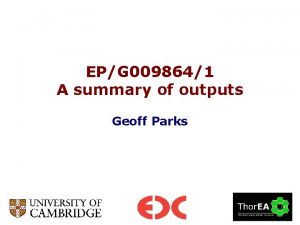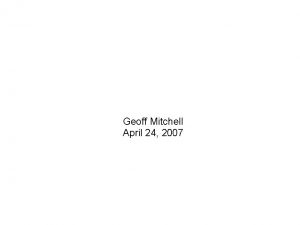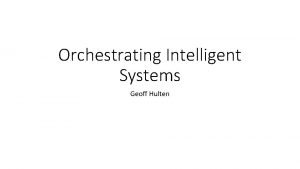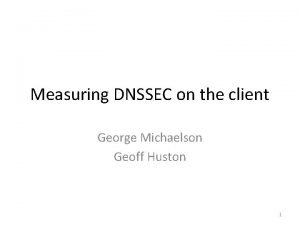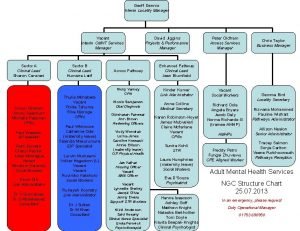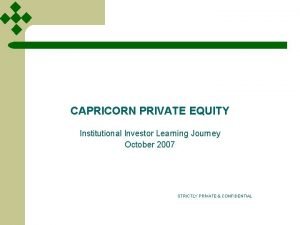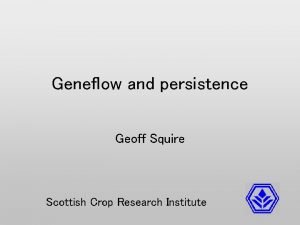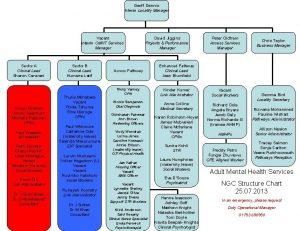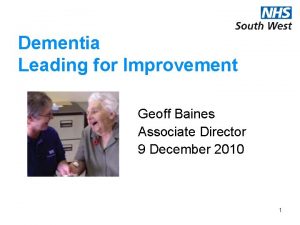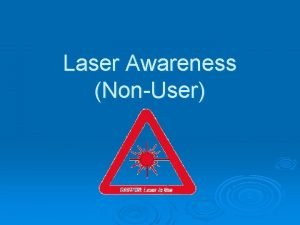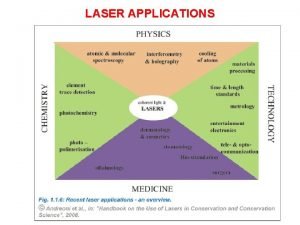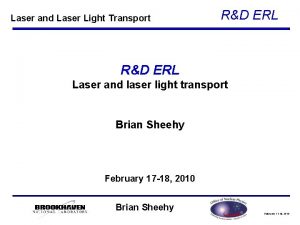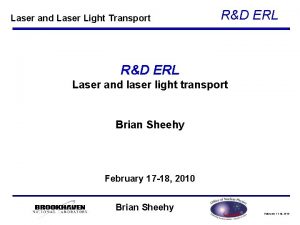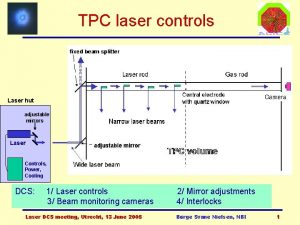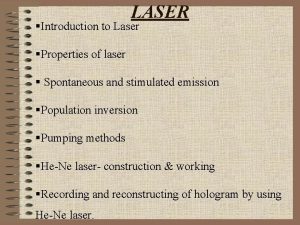Geoff Willis Risk Manager Geoff Willis Laser Econodynamics










































- Slides: 42

Geoff Willis Risk Manager

Geoff Willis Laser Econodynamics: Relieving Poverty by Modifying Income and Wealth Distributions




Income Wealth Distributions - Assumptions • Boltzmann / gamma distribution base • Power law tail

Human Abilities • Normally distributed • Large offset from zero

Fig. 2 Offset Normal Distribution Average Value Proportion Skill


Income Distribution • Boltzmann – Skewed distribution – Top decile far above bottom decile • Rich earn many times more than the poor – Mode below Median • Majority of people have less than ‘average’ wealth – Approx 15% less than half mean • 15% permanently below ‘ relative poverty line’

Income Distribution • Boltzmann – skewed distribution – ‘unfair’ distribution • Boltzmann with Power Tail – even more skewed – even more ‘unfair’ distribution

Income Distribution • Boltzmann – Maximum entropy output – Independent of microscopic interactions – Difficult to change

Traditional methods of redistribution • ‘Communist’ methods – need totalitarian control – poor growth – still have poverty Fighting entropy – does not work

Traditional methods of redistribution • ‘Socialist / Social Democrat’ methods – need high levels of control – high levels of taxation – high welfare spending Fighting entropy – does not work well, expensive


Income Distribution • Boltzmann – Why a skewed distribution? Because – Closed at zero • Negative wealth / income not usually allowed – open ended in positive direction so Assymmetrical distribution True of most physical systems – but not all

Fig. 4 Fig. 5 + E E 5 - E Non lasing material Energy exchange to upper levels possible E 4 E 1 + E 54 - E 4 -1 Lasing material Energy exchange to upper levels not possible


Modified Distribution • No Upper Limit – Boltzmann distribution • Introduce Upper Limit – Maximum 6 energy units – Any interaction that results in more than 6 energy units is prohibited


Modified Distribution • Do same with income distributions: • Introduce Upper Limit – Maximum income per year – If a person earns more than set amount in 1 year (including fringe benefits etc) • Criminal offence • Sent to prison – If set max wealth at double mean wealth • Should get symmetrical distribution

Fig. 6 Average wealth Upper boundary Proportion w 2 w

Fig. 7 Average wealth Upper boundary Proportion w 1. 5 w

Fig. 2 Offset Normal Distribution Average Value Proportion Skill

Problems • Isolation – People affected by cap move to other country – Would need severe restrictions on freedom or very good international cooperation • Existing Rich would lose lots of money – Influential people! – Perceived to be unfair by many others


UK NES Data 1992 • 121, 000 people • Average income £ 297 pw • Maximum £ 1600 pw – In reality will be much higher • 5% above £ 600 – double maximum – Influential people!


Stepped Cap • Lowest cap level at 1. 5 times average – Raise with wage inflation • Highest cap level at current maximum – Not raised at all (effectively decreased) • Steps between max and min – Raised with cost inflation • Bottom end should slowly ‘pressurise’ Apply similar process to wealth

Possible Solutions • Stepped Caps • Caps on wealth – Eventually would reduce need for cap on income – But people allowed current wealth, and also locked wealth for retirement age (also capped) • Maximum wealth limits split on inheritance – (£ 1, 000 could be split into two limits of £ 500, 000 for two children)

Problems • Isolation – International agreement would take long time to resolve – Severe restrictions on freedom • Existing Rich would lose lots of money – Influential people! – Perceived to be unfair by many others – Stepped cap would take long time to have affect

Local Isolated Systems (Welfare Systems) • Set Up Required Conditions – Welfare scheme • (say 100 people) • Allowance – Only Recipients have allowance • Isolated System • (say Allowance of 120 units each) – Maximum Wealth – Pressurisation

Local Isolated Systems (Welfare Systems) • Coupon – Issued by government • Independent Unit of Wealth • (say 10, 000 coupons issued each week) • (equivalent to 100 per recipient) – Exchangeable • Freely Interacting

Local Isolated Systems (Welfare Systems) • Coupon – Can only be cashed in by people with allowance But – Distributed through Private Employers • Competition • Market Efficiency

Local Isolated Systems (Welfare Systems) • Government Give Allowance to Beneficiaries • Government Sells Coupons to Employers • Employers give Coupons to Beneficiaries – in exchange for labour • Beneficiaries cash in Coupons – But only to value of Allowance

Local Isolated Systems (Welfare Systems) • Ratio of Coupons to Allowance Only 100 Coupons for each 120 Allowance – Pressurisation – Competition – Inverted Distribution

Average wealth = Total Coupons Total Allowance Upper boundary Maximum Allowance Proportion w

Problems • • • Simplistic Expensive Separation of Society Collusion Cheating More details: cond-mat/0408227

Conclusions • If, Income / Wealth systems are – ‘thermodynamic’ – maximum entropy • Apply ‘thermodynamic’ solutions – use models from physics, engineering etc

Conclusion • Do not fight entropy • Use entropy

New Scientist - March 1993

Geoff Willis
 Geoff willis
Geoff willis Liquidity measures
Liquidity measures Portfolio manager synergy manager parental developer
Portfolio manager synergy manager parental developer Senior manager vs general manager
Senior manager vs general manager Financial risk manager syllabus
Financial risk manager syllabus Quotes from romiette and julio
Quotes from romiette and julio Geoff savage
Geoff savage Geoff petty
Geoff petty Radiation safety
Radiation safety Geoff parks
Geoff parks Geoff sussman wound clinic
Geoff sussman wound clinic Geoff mitchell md
Geoff mitchell md Geoff hulten
Geoff hulten Sue cowley behaviour management
Sue cowley behaviour management Geoff barton dundee
Geoff barton dundee Geoff wilson lexington ky
Geoff wilson lexington ky Geoff bridgman nz
Geoff bridgman nz Geoff layer
Geoff layer Geoff cundiff
Geoff cundiff Geoff hollington
Geoff hollington Geoff michaelson
Geoff michaelson Geoff hayward
Geoff hayward Geoff dennis
Geoff dennis Geoff barton headteacher
Geoff barton headteacher Watchdog dad
Watchdog dad Geoff knowles
Geoff knowles Geoff snelgar
Geoff snelgar Geoff buckley
Geoff buckley Geoff squire
Geoff squire Geoff dennis
Geoff dennis Geoff goldsmith
Geoff goldsmith Geoff baines
Geoff baines Geoff kleinman
Geoff kleinman Significance of icedip model
Significance of icedip model Geoff huston apnic
Geoff huston apnic Risk financing transfer adalah
Risk financing transfer adalah Ar = ir x cr x dr
Ar = ir x cr x dr Avoidance risk
Avoidance risk Relative risk
Relative risk Absolute risk vs relative risk
Absolute risk vs relative risk Business risk and financial risk leverage
Business risk and financial risk leverage The biggest risk is not taking any risks
The biggest risk is not taking any risks Absolute risk vs relative risk
Absolute risk vs relative risk









